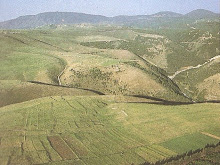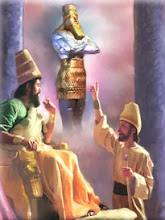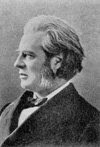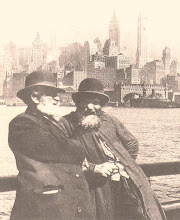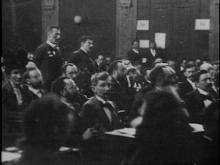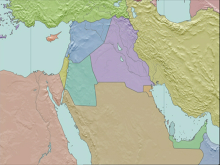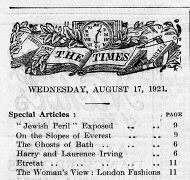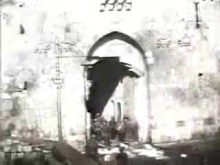ADAM CLARKE and DATE SETTING
Dr. Vic Reasoner
Dr. Vic Reasoner
THE ARMINIAN MAGAZINE. Issue 2. Fall 2011. Volume 29.
Date published to Extended January 2012
There has been some attention given to the dates calculated by Adam Clarke in Daniel. Writing in the early nineteenth century, Clarke commented on Daniel 12:9 that "the time of the end" would not arrive before the twentieth century.
Clarke interpreted the 1335 days of Daniel 12:12 as years. He suggested that if the origin of Mohammedanism in A. D. 612 is taken as a beginning point, 1335 years later would bring us to A. D. 1947, "when the fulness of the Gentiles shall be brought in." This is hailed as a remarkable prediction since it was in 1947 that the U. N. partitioned Palestine to create the state of Israel. However, Clarke did not anticipate the formation of Israel as a nation; for him bringing in the fullness of the gentiles meant their salvation and entrance into the kingdom of God which would produce the millennium. Clarke describes this as a time when wars would cease, Jew and gentile would become one fold, and God properly worshiped over the face of the whole earth.
Dispensationalists, however, read into Clarke their own presuppositions. They would connect Clarke's reference to the fullness of the gentiles to Luke 21:24 which states that "Jerusalem will be trampled on by the Gentiles until the times of the Gentiles are fulfilled." For Jerusalem to once again come under Jewish control is interpreted dispensationally to mean that the church age is over. The close of the church age is brought about by a secret rapture and God's agenda then becomes the establishment of a Jewish kingdom. This is not what Clarke anticipated nor did it happen in 1947.
While I accept the postmillennial concept of Clarke, was he accurate in applying the day/year formula to Daniel 12:12? Clarke noted that v 11 specified 1290 days. With the same starting point, A. D. 612, we would then arrive at the year 1902. Clarke thought that after 1902 "the religion of the FALSE PROPHET will cease to prevail in the world." Clarke thought the false religion might refer to the rise of Mohammadanism. Certainly Islam is a major false religion in the world which continues to grow; however, it did not cease in 1902. Those who think Clarke's calculations are remarkable fail to mention this one.
Clarke also sets the rise of Roman Catholicism at A. D. 755 and calculates that its fall in A. D. 2015 (see comments on Daniel 7:25). Clearly, he was not expecting the imminent return of Christ when he wrote in 1825. However, an article on Clarke's predictions does mention his comments on Daniel 8:13-14. Here again Clarke takes 2300 days as years. Clarke refers to Alexander the Great's invasion of Asia in 334 B. C. and adds 2300 years, arriving at A. D. 1966. Clarke does not specifically indicate what will happen in 1966, presumably the sanctuary will be cleansed. Clarke only said this would bring it near to the time mentioned in Daniel 7:25, which was 2015. The connection is not clear.
It is claimed in a recent article, however, that Clarke was off by one year and that 1967 was the very year that the Jews took control of Jerusalem and the Temple Mount. But while Jewish control of Jerusalem is significant to dispensationalists, Clarke anticipated the reform of the Christian Church (see his comments on 7:25).
Clarke's day/year formula is common among those who interpret prophecy historically. William Miller interpreted the 2300 days in Daniel 8 as years, but took the decree of Artaxerxes to rebuilt Jerusalem in 457 B. C. as his beginning point. This led him to the conclusion that Christ would return to earth in A. D. 1843-4.
A preterist approach to Daniel 8 also begins with Alexander the Great. After his kingdom was divided by four generals, a "little horn," Antiochus Epiphanes gained control in 175 B. C. On December 16, 168 B. C. Antiochus sent 20,000 troops to seize Jerusalem. 40,000 people were massacred in three days. Sacrifices ceased, swine were offered on the altar and an idol of Zeus was erected in the temple.
Under Judas Maccabaeus, Antiochus was overthrown on December 25, 165 B. C., an event celebrated at Hanukkah. Since temple sacrifices were offered evening and morning, 2300 evenings and morning would be 1150 days. Judas Maccabaeus purified the temple and built a new altar approximately 1150 days, or 3 ½ years after the temple had been profaned. Josephus recorded that Antiochus "spoiled the temple, and put a stop to the constant practice of offering a daily sacrifice of expiation for three years and six months" [Wars of the Jews 1.1.1].
The preterist approach also makes more sense in Daniel 12. Starting with Daniel 11:40 there is a shift to the time of the end [see Joyce G. Baldwin, Tyndale Old Testament Commentaries: Daniel (Downers Grove, IL: InterVarsity, 1978), 199-200]. This is not a reference to the end of the world, but to a time when the kingdoms of man would be replaced by the kingdom of God. This occurred during the time of the fourth empire, the Roman empire. If Daniel 9 moves past the events described in chapter 8, then the final vision, Daniel 11:40-12:13, can also move past the events of Daniel 10-11:39. Again, the temple would be profaned. This siege would be even worst than the occupation under Antiochus had been. This Roman siege lasted from 67-70 A. D.
Daniel 12:7 refers to "time, times and a half a time." Clarke notes in his comments on the following verse that these make 3½ years of prophetic time, but then interprets this interval as 1260 years. The preterist approach rejects the day/year formula and understands the reference in Daniel to 2300 mornings and evenings or 1150 days (8:14), 1290 days (12:11), 1335 days (12:12), and time, times and half a time (8:25; 12:7) all to refer to time periods of approximately 3½ years [see Milton S. Terry, The Prophecies of Daniel Expounded (New York: Hunt & Eaton, 1893), 64; 130-134].
It should also be noted that Revelation 11:2 and 13:5 refers to 42 months; 11:3 and 12:6 refer to 1260 days. Revelation 12:14 even borrows Daniel's phrase "time, times, and half a time." It should be obvious that John in Revelation is referring to the same tribulation period as does Daniel. Milton S. Terry represents a later generation of Methodist scholars who had turned from the historical to the preterist interpretation [see Camden M. Cobern, Whedon's Commentary on the Old Testament (New York: Eaton & Mains, 1901), Vol. 8; McClintock and Strong, Cyclopedia, 2:663-670]. Both of these volumes interpret the fourth kingdom as Syria, but concede that Rome is the traditional view. Terry taught Greece was the fourth empire.
These interpretations do not bring Daniel's seventy sevens up to the time of the coming of the Messiah. It is in the days of the fourth kingdom that the Messiah comes (Dan 2:44); therefore it must be Rome. This view also makes the abomination that causes desolation (9:27; 11:31; 12:11) refer to the actions of Antiochus. However, Jesus warned his followers to flee the city when this happened (Matt 24:15-21). Therefore, it must refer to an action which would happen in the first century, not a past event.
Josephus wrote, "And indeed it so came to pass that our nation suffered these things under Antiochus Epiphanes, according to Daniel's vision and what he wrote many years before it came to pass. In the very same manner Daniel also wrote concerning the Roman government, and that our country should be made desolate by them [Antiquities of the Jews 10.11.7].
However, it is entirely consistant to hold to a preterist interpretation and teach that the Roman empire is the fourth kingdom. But Clarke held to a historical approach, stating that a day stands for a year in his comments on Daniel 7:25 and again at 12:12. However, at 7:25 he connects his day/year formula with the week/year interpretation of 9:24. But "weeks" is not in the Hebrew text. The Jews had been in captivity for 70 years. Now Daniel is told what would occur during seventy sevens. The context (9:1-2) refers to 70 years, so this period, revealed to Daniel, is 70 years x 7. Clarke interprets this set of numbers accurately. Why could he not see, however, that Daniel's references to time, times and half a time or 1200 + days either typified or referred to the last half of Daniel's seventieth week, the time of great tribulation?
However, I affirm Clarke's basic postmillennial theology. This has been misrepresented by the article which states that Clarke anticipated that from 1967 "it would not be long until the anti-christ would appear, and the final chapters of human history would unfold. He expected the second coming of the Messiah to be around the year A. D. 2000" ["Daniel Told Us! Adam Clarke Showed Us," Faith in the Future, Vol. 23, No. 4 (April, 1995), 16-17]. Clarke believed in a succession of antichrists. In Clarke's day the enemies of Christianity were the papist, the pagan, and the Mohammedian.
Each of these systems would be conquered by the advancement of Christ's kingdom. Then the millennium would begin. If Clarke thought the antichrist teaching of Mohammedanism would end in 1902, the antichrist teaching of Roman Catholicism would end by 2015, and Christ would return at the end of the millennium, how does the author arrive at a date for the second advent which is around 2000? This projection is the presupposition of the author, not the calculation of Clarke.
Ralph Earle also cited Clarke's predictions for 1947 and 1966. He asked, "How could Adam Clarke make these precise predictions 150 years ago exactly to the year, as we have not seen them fulfilled? We have no answer, unless this was what these scriptures were intended to mean." However, Earle made no reference to the other two predictions: 1902 and 2015 [What the Bible Says About the Second Coming (1970; Rpt. Grand Rapids: Baker, 1973), 85-7].
The Hope of the Gospel (Evansville, IN: Fundamental Wesleyan, 1999), 52-55.
